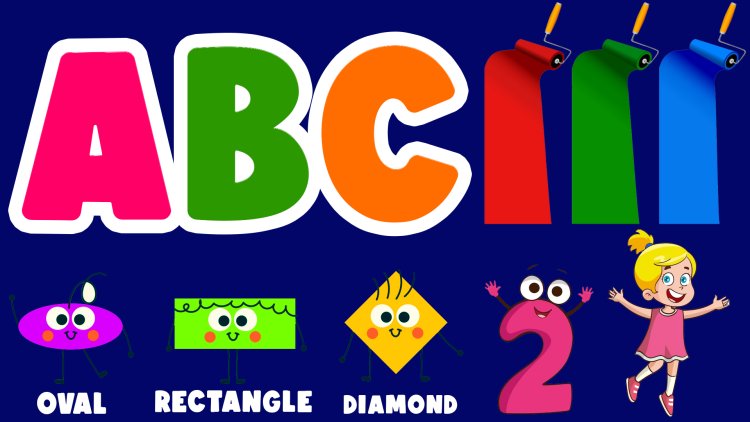The Power of Easy Learning: Unlocking the Secrets to Smarter Education
In today’s fast-paced world, education has never been more important, and the pressure to learn quickly and efficiently is higher than ever.

In today’s fast-paced world, education has never been more important, and the pressure to learn quickly and efficiently is higher than ever. Many students, professionals, and lifelong learners are turning to the concept of "easy learning" in search of smarter, more effective ways to absorb and retain knowledge. But what exactly is easy learning, and how can we incorporate it into our daily routines for optimal success?
What is Easy Learning?
Easy learning refers to methods, strategies, and approaches that simplify the learning process without compromising the depth or quality of the material. It is about breaking down complex subjects into more digestible pieces and making the learning experience enjoyable and efficient. Easy learning isn't about taking shortcuts or avoiding challenges; rather, it involves adopting techniques that help learners stay engaged, motivated, and focused on the task at hand.
The Benefits of Easy Learning
-
Increased Retention
When we find learning enjoyable or relatable, our brains are more likely to retain the information we are exposed to. Easy learning techniques often encourage repetition, active recall, and spaced practice—methods that are scientifically proven to boost long-term memory retention. -
Boosted Motivation
One of the key challenges learners face is a lack of motivation. Struggling with difficult concepts can quickly lead to frustration, causing learners to give up. Easy learning approaches, however, focus on breaking down information into smaller, manageable chunks, which prevents burnout and encourages a consistent and positive learning experience. -
Better Focus and Engagement
By simplifying the learning process, easy learning methods help eliminate distractions and improve focus. The more engaged a learner is, the better their ability to absorb and understand new information. Gamification, for example, is an increasingly popular technique that makes learning feel less like a chore and more like a fun challenge. -
Efficient Learning
Time is precious, and easy learning techniques maximize our time by focusing on what works. With the help of smart strategies such as mind mapping, active recall, and mnemonic devices, learners can learn more in less time.
Key Strategies for Easy Learning
-
Chunking
Chunking is the process of grouping information into smaller, more manageable pieces. Instead of memorizing an entire textbook or long lists, learners break the content into categories or groups that are easier to understand and remember. For example, when learning a foreign language, it's easier to learn words in related groups, such as family members, colors, or food items. -
Spaced Repetition
Spaced repetition involves reviewing material at increasingly longer intervals. Rather than cramming all at once, this technique helps reinforce the material over time, making it easier to recall when needed. Apps like Anki are widely used for this technique, particularly for memorizing vocabulary and facts. -
Active Recall
Active recall is a method where you actively try to recall the information you’ve learned without looking at the notes. This approach forces the brain to retrieve information, strengthening memory connections and improving long-term retention. -
Visual Learning
Some people learn best through visuals, which is why incorporating diagrams, mind maps, and infographics can make complex topics much more accessible. For instance, using a flowchart to explain a process can make it easier to understand than reading a text-heavy explanation. -
Teach What You Learn
One of the most powerful ways to solidify knowledge is by teaching others. This reinforces the material in your mind and helps you discover any gaps in your understanding. Whether through study groups, online tutorials, or informal teaching, explaining concepts can improve clarity and confidence. -
Create a Positive Learning Environment
The environment in which we learn plays a crucial role in how easily we absorb information. A quiet, organized, and comfortable space can help learners stay focused and retain more material. Personalizing the space with objects or colors that inspire creativity or relaxation can further enhance the learning experience.
Easy Learning in the Digital Age
Technology has revolutionized how we approach learning. With a wealth of online resources, tools, and platforms, easy learning has become more accessible than ever before. Websites like Khan Academy, Coursera, and Duolingo have made learning everything from math to languages available to anyone with an internet connection.
Furthermore, podcasts, audiobooks, and video tutorials have made it easier for learners to absorb information passively while on the go. This flexibility allows people to learn at their own pace, on their schedule, and in a way that suits their learning style.
Overcoming Common Challenges to Easy Learning
While the concept of easy learning sounds promising, it’s not always without its challenges. One common issue is the temptation to seek shortcuts. It’s important to remember that true understanding and mastery take time, and no amount of "easy" methods will replace consistent effort and practice. Easy learning strategies are designed to make the process smoother, but the learning journey itself requires dedication.
Another challenge is finding the right method that works for you. Not every technique works for everyone, and it’s important to experiment with different approaches until you find the one that best fits your learning style and goals.
Conclusion
Easy learning is not about bypassing effort, but rather about working smarter, not harder. By using strategies such as chunking, spaced repetition, and active recall, learners can significantly improve their ability to absorb and retain knowledge. With the added advantage of technology and the support of digital resources, easy learning has the potential to revolutionize how we approach education in today’s world.
Remember, learning doesn’t have to be difficult—it just needs to be approached with the right mindset, tools, and strategies to make it more engaging and effective.
What's Your Reaction?


















